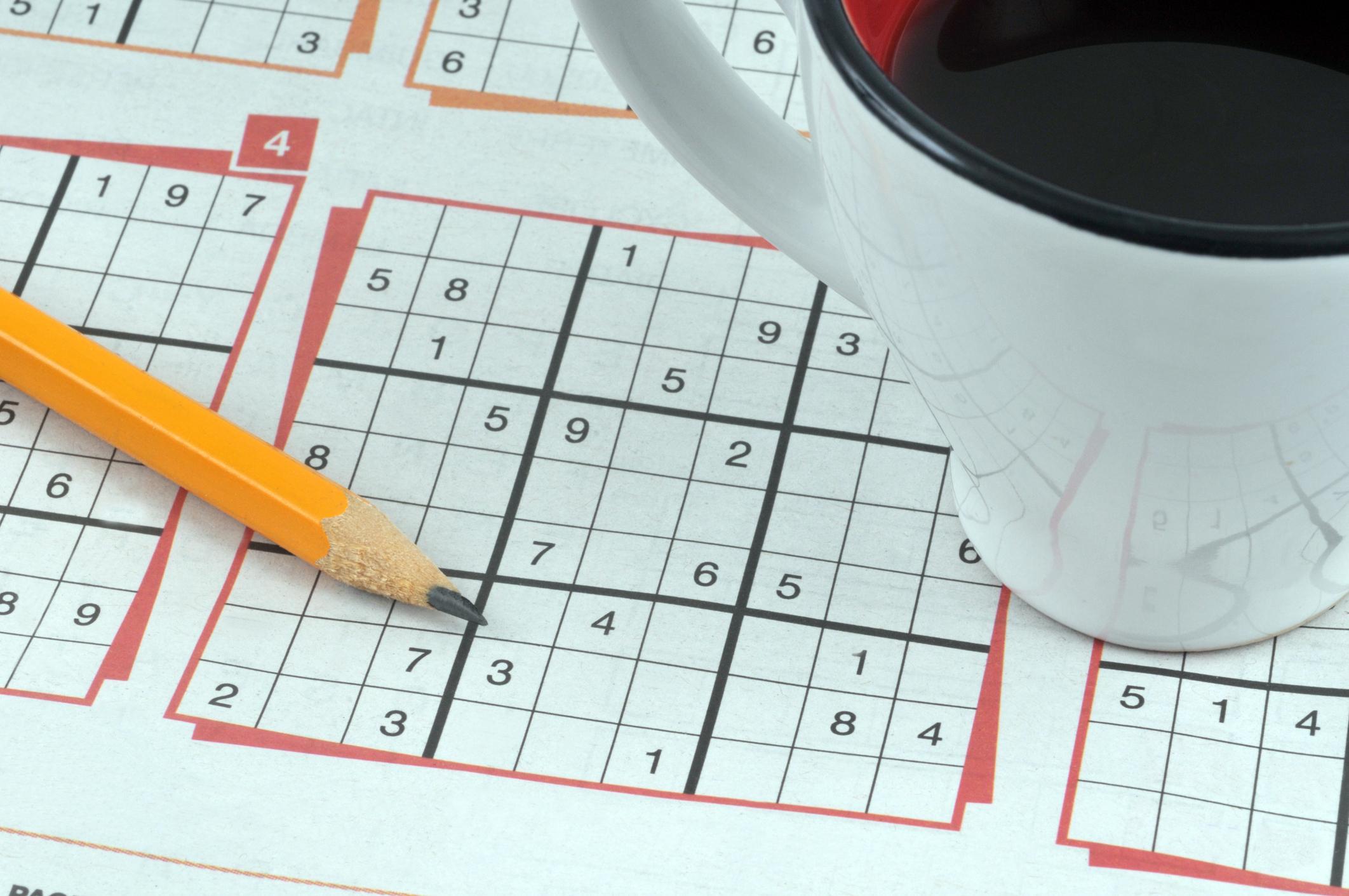How to Solve a Difficult Sudoku?


Sudoku is a globally popular logic-based number puzzle that has captivated our society for decades. The game's simplicity, coupled with its challenging nature, makes it a favorite pastime for people of all ages, from beginners to puzzle aficionados. The puzzle demands a blend of analytical skills, patience, and a keen eye for detail. Sudoku is much more than just a game; it's a mental workout that challenges and sharpens the brain.
The following article by oneHOWTO presents a step-by-step guide to effectively solve difficult Sudoku puzzles using various proven methods and techniques.
Origin of sudoku
The origin of Sudoku can be traced back to 18th-century Switzerland. However, the puzzle we recognize today as Sudoku took shape much later, in the late 1970s, in Japan.
The Swiss mathematician Leonhard Euler is credited with creating the concept of what is now known as Latin squares in the 18th century. Latin squares are grids filled with numbers or symbols in a way that each appears exactly once in each row and column. Euler's work laid the foundation for later developments in the field of combinatorial mathematics.
Fast-forward to the late 1970s, and Sudoku, as we know it, began to emerge in Japan. The puzzle was initially known as "Number Place" (Nanpure in Japanese) and was invented by an American puzzle designer named Howard Garns. Garns created the puzzle for Dell Magazines, and the first known instance of Number Place was published in 1979 in the magazine "Dell Pencil Puzzles & Word Games."
Sudoku remained a popular pastime in Japan for decades, but it wasn't until the late 1990s and early 2000s that it gained international recognition. The puzzle started appearing in newspapers worldwide, quickly becoming a global phenomenon.
Its popularity continued to grow through the digital age, with Sudoku apps and online versions becoming widely available. Sudoku's appeal lies in its combination of logic, reasoning, and problem-solving, making it a favorite puzzle for millions of people worldwide. Today, Sudoku can be found in various forms, from traditional 9x9 grids to different grid sizes and shapes, ensuring that enthusiasts always have new challenges to solve.
Swordfish technique
Swordfish is an advanced solving strategy used to solve more challenging Sudoku puzzles. It is based on the concept of eliminating candidates from cells using patterns that involve three rows and three columns.
The Swordfish technique works as follows:
- Look for a candidate number that appears in three rows and three columns within a specific region (a row, column, or box).
- Find three different rows where the candidate appears in the same three columns. Then, find three different columns where the candidate appears in the same three rows. This creates a "swordfish" pattern.
- Once you've identified the swordfish pattern, you can eliminate the candidate from the other cells in the three rows and three columns that form the pattern. This is because the candidate must be present in one of those cells to maintain the pattern, and since it can only appear once in each row and each column, it cannot appear anywhere else in those rows and columns.
The Swordfish technique can be quite powerful in solving complex Sudoku puzzles. However, it requires a good understanding of the puzzle's rules and the ability to spot and analyze patterns effectively. It's worth noting that Swordfish is considered an advanced solving technique, and beginners may want to focus on simpler strategies.

X-wing technique
X-wing is another advanced solving strategy used to tackle more challenging Sudoku puzzles. It involves finding a specific pattern in the puzzle that allows you to eliminate candidate numbers from certain cells.
The X-wing technique is based on identifying a pattern of candidate numbers that form a rectangle shape in the puzzle. The pattern occurs when there are exactly two rows and two columns where the same candidate appears as a pair (i.e., two occurrences) in each row and column. These four cells constitute the corners of the rectangle.
Here's how the X-wing technique works:
- Look for a candidate number that has exactly two occurrences in two rows and two columns.
- After finding the candidate number, ensure it forms a rectangle by checking for two rows and two columns where the candidate appears twice in each, making sure the rows and columns do not intersect.
- If you find the X-wing pattern, you can eliminate the candidate number from the other cells in the two rows and two columns that form the rectangle. This is because the candidate must be present in one of the corner cells of the rectangle, and since it can only appear once in each row and each column, it cannot appear in the other cells.
The X-wing technique can be a valuable tool for solving more challenging Sudoku puzzles, especially when combined with other advanced strategies. As with other advanced techniques, it requires practice and a good understanding of the puzzle's rules to use effectively.
XY-Wing technique
The XY-Wing is another advanced solving strategy used to tackle complex Sudoku puzzles. It involves identifying a specific pattern of candidate numbers that allows you to make eliminations in certain cells.
The XY-Wing technique is based on three cells in the puzzle that form a particular relationship. Let's break down how it works:
1. Look for three cells that are linked in such a way that they form a chain of candidate numbers. These three cells should meet the following criteria:
- The first cell (A) and the second cell (B) share a candidate number (let's say X).
- The second cell (B) and the third cell (C) share another candidate number (let's say Y).
- The first cell (A) and the third cell (C) have a third candidate number (let's say Z).
2. In the XY-Wing pattern, if Z can be eliminated from any of the cells (A, B, or C), it allows you to make eliminations elsewhere in the puzzle.
3. If Z can be removed from one of the cells (A, B, or C), you can eliminate any instance of Z in the cells that "see" the third cell (C). In Sudoku, cells that are in the same row, column, or box as a particular cell are said to "see" that cell.
Forced Chain
Forced chains, also known as Alternating Inference Chains or Strong Inference Chains, are advanced solving techniques used to solve complex Sudoku puzzles. They involve creating logical chains of candidate numbers to make deductions and eliminate possibilities.
The Forced Chain technique works as follows:
- Look for a candidate number that you want to analyze and potentially eliminate from certain cells.
- Start with a cell where the candidate appears and identify another cell in the same row, column, or box where the same candidate also appears. You create a chain by connecting these two cells.
- From the second cell in the chain, find another cell in the same row, column, or box where the same candidate appears. Continue extending the chain by connecting cells that share the same candidate.
- Keep extending the chain until you reach a contradiction. A contradiction occurs when you arrive at a cell where the candidate you are analyzing cannot be valid because of other numbers already placed in that cell. When a contradiction is found, it means the initial candidate assumption is incorrect.
- When you encounter a contradiction, backtrack in the chain and take the opposite assumption regarding the candidate. For example, if you started with assuming the candidate is true, now assume it is false, or vice versa.
- With the new assumption, continue the chain again and look for another contradiction. If you find one, repeat the process of backtracking and taking the opposite assumption.
- Eventually, you will reach a point where the chain doesn't lead to a contradiction, and you can make deductions based on the candidate's validity. If the chain with the original assumption leads to a contradiction, it means the candidate can be eliminated from certain cells. If the chain with the opposite assumption leads to a contradiction, it means the candidate is valid, and you can make an elimination based on that information.
Forced chains can be quite challenging to master and require a deep understanding of Sudoku solving techniques. They are considered among the most advanced strategies and are usually employed in puzzles with a high level of difficulty.

Unique Rectangle
The Unique Rectangle is an advanced solving strategy used to solve certain Sudoku puzzles. It involves identifying a specific pattern in the puzzle that leads to contradictions, allowing you to make eliminations.
The unique rectangle technique is based on finding a rectangular pattern in the Sudoku grid that has specific characteristics. The pattern involves four cells arranged in a rectangle, where each corner of the rectangle contains two candidate numbers (forming a pair). Additionally, two opposite corners of the rectangle must have the exact same candidates. Here's how the unique rectangle technique works:
- Look for a candidate number that has exactly two occurrences in the puzzle.
- Once you've found the candidate number, look for four cells in the grid that form a rectangle and contain the candidate number as a pair in each corner. The candidate number must appear twice in two opposite corners of the rectangle.
- If the rectangle meets the uniqueness condition (i.e., two opposite corners have the same candidate pair), then you have a uniqueness rectangle.
- If you assume one of the two possible pairs is true, follow the implications of that assumption through the puzzle. If you eventually reach a point where placing the candidate in one of the opposite corners of the rectangle leads to a contradiction, then you know that assumption is false.
- The contradiction resulting from the assumption allows you to make eliminations in the puzzle. Specifically, you can eliminate the candidate from cells that "see" both opposite corners of the uniqueness rectangle.
- Continue searching for other unique rectangles and use the same logic to solve the puzzle further.
Nishio
Nishio is our final advanced solving strategy used as a last resort when no other logical techniques can make further progress in solving a Sudoku puzzle.
It involves making a speculative assumption and exploring the consequences of that assumption to see if it leads to a contradiction. Here's how the Nishio technique works:
- Look for a cell in the puzzle that has only a few candidate numbers left (usually two or three candidates).
- Choose one of the remaining candidate numbers in the identified cell and assume it is the correct number.
- Based on the speculative assumption, try to solve the puzzle, making all the logical deductions you can using the standard Sudoku solving techniques.
- If the assumption leads to a contradiction, such as two instances of the same number in a row, column, or box, then the assumption is proven incorrect. This means the other candidate(s) in the cell you initially selected must be the correct number(s).
- If the assumption does not lead to a contradiction, it means it is potentially valid. However, you cannot be certain at this point. Now, you must backtrack to the point where you made the speculative assumption and try the other remaining candidate(s) in that cell. Repeat the process with the new assumption.
- Repeat the process of making speculative assumptions and following their implications until you are able to fill in the correct number(s) in the identified cell. This may involve going through multiple rounds of speculation and backtracking.
It's essential to keep track of all the assumptions you make during the Nishio process to avoid repeating the same unsuccessful paths. Nishio can be time-consuming and challenging, and it is generally recommended to use it as a last resort when no other logical solving techniques yield further progress in the puzzle.
As Nishio involves speculative guessing, it is not as elegant or satisfying as solving a puzzle through pure logic. For more enjoyable solving experiences, it's best to focus on mastering the standard logical solving techniques before resorting to Nishio.
If you want to read similar articles to How to Solve a Difficult Sudoku?, we recommend you visit our Hobbies & Science category.






